What is the one thing that, according to science, will make our lives richer and vastly more fulfilling? This 85-year continuing longitudinal study from Harvard says the answer is relationships.
Dr. Robert Waldinger is the current director of the Harvard Study of Adult Development, the longest-running research on adult life. Tracking over 2,000 lives since 1938, Waldinger and his team have dissected the fabric of well-being, finding that wealth and achievements fall short compared to the power of our connections with other people.
Over the eight decades since the study began, scientists have determined that loneliness and isolation can have negative effects on our mental, emotional, and even physical well-being. Key findings of this study suggest that nurturing relationships may serve as our best source of fulfillment, emphasizing the need for “social fitness” alongside mental and physical health.
According to Waldinger, it’s time to invest in the bonds that matter, which, ultimately, is an investment in yourself.
ROBERT WALDINGER: If you had to make one choice right now to invest in what would keep you happy and healthy as you go through the rest of your life, what would that investment be? Most of us think it’s something to do with getting rich or achieving a lot to have a happy, healthy life- but the single choice we can make that’s most likely to keep us on a good path of well-being is to invest in your relationships with other people.
The people in our 85-year study who stayed the happiest and the healthiest were the people who had the warmest connections with others. Most research that’s been done is done on what goes wrong in human development so that we can help people, but this was a study of what goes right.
I’m Robert Waldinger. I am a psychiatrist and I’m professor of psychiatry at Harvard Medical School.
NARRATOR: Hey, Big Thinkers we’ll return to the video in a moment. But first, a brief word about the sponsor of this video, BetterHelp. At Big Think, one topic that we frequently cover is the importance and impact of mental health. If you’re going through a difficult period, therapy can be great for providing insights and tools to help you navigate those tough situations. But starting therapy is hard. Thankfully, BetterHelp can improve the process.
It’s an online service that matches you to one of over 30,000 therapists in their network. You just fill out a questionnaire about what you’re struggling with and BetterHelp uses your answers to match you to a professional who specializes in those struggles. Then you can have your therapy sessions as a phone call, as a video chat, or even via messaging, if you prefer that whatever’s the most comfortable version of therapy for you.
It’s about prioritizing your mental well-being, which isn’t just a nice to have, but essential for a fulfilling life. And for those in our Big Think community who are interested, here’s a special offer get 10% off your first month when you visit betterhelp.com/bigthink or select Big Think during the signup process.
All right. Now back to the video.
WALDINGER: I direct the Harvard Study of Adult Development at Massachusetts General Hospital. I am the fourth director of the Harvard Study of Adult Development, and it is the longest study of adult life that’s ever been done. It started in 1938.
WALDINGER: This study set out to understand what makes people thrive as they grow and develop, and it has followed the same people throughout their entire lives from the time they were teenagers all the way into old age, they began to include their wives and eventually all their children.
Now there are over 2,000 people in these 724 families who we have followed year after year after year. We started collecting information by giving elaborate psychological examinations, also medical examinations. Then we went to their homes, we talked to their parents, and sometimes even their grandparents. The workers made elaborate notes about what was being served for dinner and what the discipline style was in the family and even what the curtains looked like.
And then eventually as new methods of studying human life came on board, we adopted those methods. So audio-taping, video-taping, DNA wasn’t even imagined in 1938 when the study began, but we now draw blood for DNA. And we’ve put many of our people into an MRI scanner and watched how their brains light up as we show them different visual images. We bring them into our laboratory and we deliberately stress them out and then we watch how they recover from stress as one more way of understanding well-being.
So we’ve learned several big lessons about relationships, about good relationships. One of them is that childhood experience really does matter. What happens to us in childhood sets the stage for what we come to expect from the world. That’s often a good thing if we are raised by people who are warm and caring and reliable. But some people are raised in environments where they feel like the people who are supposed to take care of them aren’t trustworthy, can’t be relied upon, and so many of those people come into adulthood with the expectation that the world is not a safe place.
Well, it turns out our study shows adult experience can correct for some of those unfortunate lessons that people learn in childhood. Becoming connected with a good partner, with good friends who you can count on can go a long way to change those gloomy expectations about the world and about relationships.
Another lesson that we learned is that all relationships that are important have some disagreements or some difficulties. Actually, facing those difficulties goes a long way to strengthen relationships much of the time. It’s normal to have disagreements, it’s normal to have difficulties, and the more skill we can develop in working through difficulties, the better our social worlds are.
And finally, one of the biggest lessons is that our connections with other people help us weather the hard times of life- and hard times are there in every life. Our original participants were born during the Great Depression and many were of an age to go and serve in World War II.
And when we asked them, “How did you get through these really difficult times?” All of them, to a person, talked about their relationships. “Our neighbors shared what little we had during the depression. My fellow soldiers in the trenches were the people who kept me going. The letters that came to me from back home while I was overseas in the war were what sustained me.” And so what we find is that these connections turn out to be the best protection against the difficult times that are always coming our way.
We know that the physical effects of positive relationships are very different from the physical effects of loneliness or of actively unhappy, acrimonious relationships. The best hypothesis about how relationships get into our bodies and affect our physical health is through stress. When we’re stressed, the body is meant to go into what we call fight or flight mode, where essentially heart rate goes up, might start to sweat, a variety of changes happen, but then when the stressor is removed, the body is meant to return to equilibrium.
If I have something stressful happen during the day and I can go home and talk to a friend or call someone, I can literally feel my body calm down. If I don’t have anyone I can talk to, we believe what happens is we stay in a kind of low level chronic fight or flight mode. And what that means is that we have higher levels of circulating stress hormones like cortisol. We have higher levels of inflammation going on in the body, and these changes gradually wear away different body systems, which is how stress and loneliness could make it more likely that we would get coronary artery disease or Type 2 diabetes or arthritis; could affect multiple body systems through this common denominator of chronic stress.
Loneliness is certainly a stressor, but research also shows us that ongoing acrimony in a relationship, constant arguing and unhappiness, is also hazardous to our health for just the same reasons. A toxic relationship is one where we can’t get beyond difficulties, unhappiness, anger; we can’t ever come out the other side to a place where we’re okay again with each other.
And so a toxic relationship involves unhappiness, even if you’re quiet about it, chronic resentment, often withdrawal, and then active arguing. Staying in a really toxic intimate relationship may be worse than splitting up because a really difficult acrimonious relationship is that source of chronic stress that breaks down our body systems.
On the other hand, couples argue all the time without having these detrimental effects. What we’ve found from our research is that couples can argue often and quite vocally, but if there is a bedrock of affection and respect, those relationships continue to be positive and stable.
Being connected to another person makes us feel safer and keeps our bodies at a kind of physiologic equilibrium that promotes health. We know that maintaining our physical fitness is an ongoing practice, and what we found was that our happiest, healthiest people did the same with their relationships.
When we looked at all these lives and how they played out over time, we found that the people who were the happiest and the healthiest were inviting people over. They were joining clubs, they were maintaining connections with family and friends and in community. We began to think of this as a kind of fitness, a ‘social fitness,’ analogous to physical fitness.
So the question comes up: How do I know how I’m doing? Am I socially fit? Check in with yourself and say, “Do I have the kinds of relationships that I would like? Do I have as many relationships as I would like?” And if it doesn’t feel like the right amount, there are things you can do to make things the way you would like them to be.
Each of us can do that through small actions that we repeat over and over again: reaching out to friends, to family, through little texts or emails or phone calls, making sure that we see people in person who we want to keep in our lives, paying attention to how often we’re seeing people, how often we’re in touch with people, pay off into social networks that are vibrant and make us happier and keep us healthier.
One way to map your ‘social universe’ is to think of it as four quadrants, that on the horizontal axis it’s how frequently do I see this person from infrequently to frequently? And on the vertical axis, it could be, how energizing is this relationship? Up at the top, it could be very energizing, down at the bottom, it could be depleting. And then see where each important person in your life fits on this grid.
You might find that there are some people you see frequently who are quite depleting, who drain your energy. You might see that there other people who you don’t see very often, but are so energizing when you’re with them. And that can give you some pointers in terms of changes you might like to make in your relationships.
A lot depends on what you see in that little diagram that you make, and then what you want do about it. We’re all on a continuum from shyness to extroversion. Shy people may need just a few others in their life, and actually shy people get a lot of their energy from solitude, from alone time. Whereas extroverts get their energy from people and they may want a lot of people in their lives.
And so each of us needs to check in with ourselves, what’s right for me, and to really work on our social world based on what we know works for us, whether it’s a lot of people or a small number of people, or something in-between.
When we watch these thousands of lives play out over time, what we see is that the good life is an ongoing process, and it’s a process of continual change; which is different from what we all wish for, which is that we would finally get to a place where everything’s good and it’s gonna stay that way.
That’s not the truth of anybody’s life. The good life involves a practice of ongoing care for each other, for our relationships, care for ourselves, and weathering all the unexpected challenges that come along day after day, week after week.
My hope for what people will take away from these ideas is the truth, that if you’re not happy all the time, that doesn’t mean you’re doing something wrong; that we can sometimes imagine that other people have it all figured out, and we’re the only one who has ups and downs in our life.
Let me tell you, from having studied thousands of people over eight decades, that everybody has ups and downs. We never figure it out ultimately, and that that’s perfectly normal. And actually, it’s what makes life rich and interesting.
NARRATOR: Want to dive deeper? Become a Big Think member, and join our members-only community, watch videos early, and unlock full interviews.


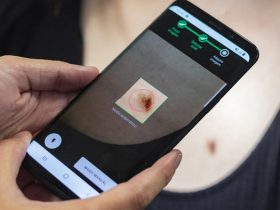






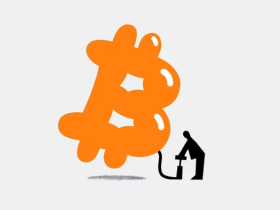

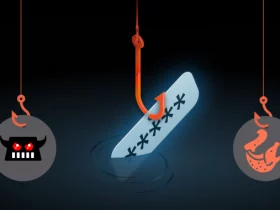




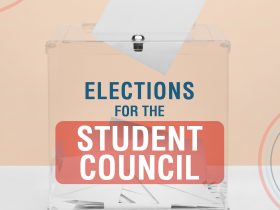



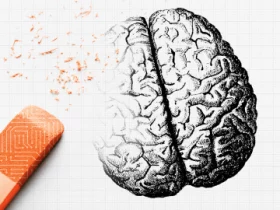

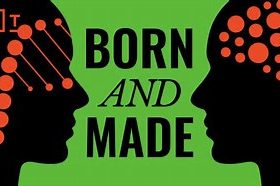
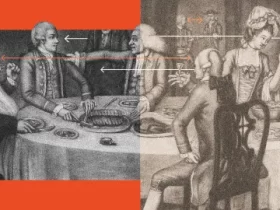
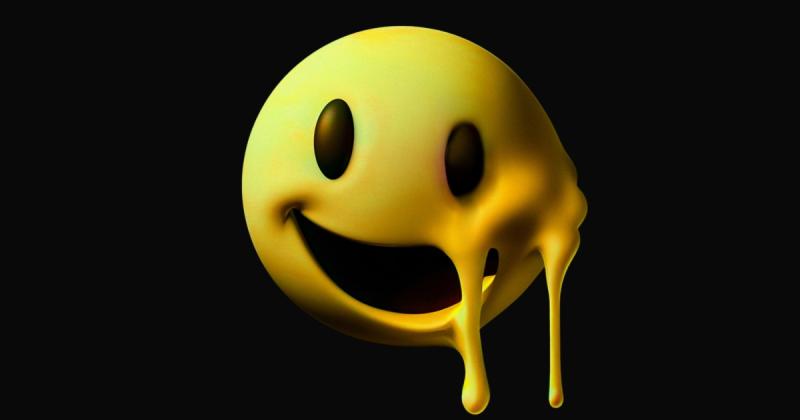



Leave a Reply